Continuing the ongoing series of interviews with creative artists working on various aspects of movie and TV productions, it is my pleasure to welcome Arman Khan. In this interview, he talks about teaching cinematography to the next generation of storytellers (spoiler alert, they love the film), keeping up with the technical advances, affecting social change through his stories, and the future of storytelling in the post-COVID world. Around these topics and more, Arman Khan dives into his work on the upcoming works.
At present, Arman Khan is working on a movie screenplay based on the true story of the clash between the Ghabizai and Ahmadzai Tribe, but the date and place have not yet been confirmed.
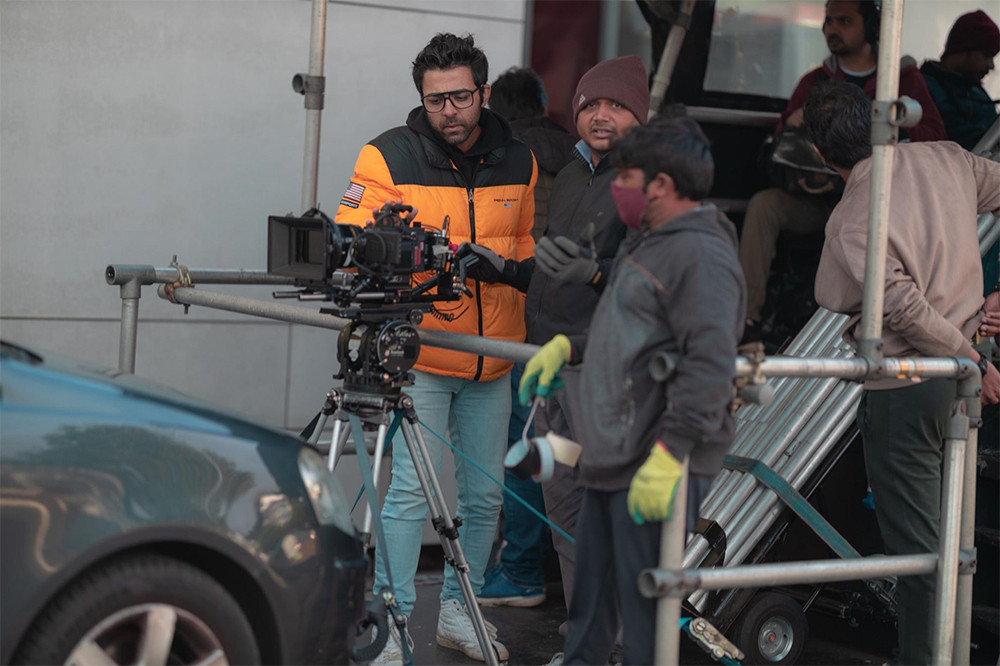
Would you please tell us about yourself and the path that took you to where you are today?
When I went to film school, I thought that maybe I wanted to be an editor. I have a cousin who worked as an editor on big comedies, and I felt that that was the part of the storytelling that I wanted to be a part of – crafting the arc. But then I got into film school and started to learn more about how movies are made. I figured out what the cinematographer’s job is to work with the director and the production designer to create a visual language to tell the story and create this visual world and work with a team of people to actualize that vision.
That role made sense to me as someone who grew up playing a lot of team sports. It’s a leadership position, but it’s about working with and delegating to a team and collaborating. That was an area of the storytelling that I fit into really well. So I got into cinematography when I was in school, and I never looked back.
Do you think this field does not work well for people who don’t collaborate well with others? Perhaps people that have strong ideas that they are not willing to compromise on?
There can be a bit of a stereotype of this auteur who rules with an iron fist, has their vision, and won’t compromise. But I’m not sure how true that actually is.
The best directors and cinematographers can understand what the vision is that they’re trying to achieve, and they can encourage the people around them to contribute their ideas. And then, they’re able to filter what works well for the project and what might not work well so that there’s cohesiveness across the project. There’s absolutely no way that one person can execute everything, and I mean that literally. They’re not moving the lights around. They’re not moving the camera themselves. They need people to work with them, and if you can’t work with the team, I’m not sure how great of a product you can ultimately make.
There’s so much great storytelling happening in the last few years, especially on streaming services. Do you feel that there’s more space for storytellers of different backgrounds to have their voices heard?
I’m excited by the democratization of voices getting opportunities. There’s a lot of streaming services that are starting to produce content, or at least give a platform for a wider variety of content to be seen. Some people worry that it’s too much content, but I think it’s still true that the good stuff floats to the top. We are seeing a wider variety of storytelling opportunities for people who didn’t traditionally get opportunities, and by opportunities, I mean financing, compared to a few years ago.
I feel that there’s still a gatekeeping aspect of it. These streaming services or production companies still choose who gets to tell those stories and what stories they deem authentic or palatable. The “diverse” stories that we’re getting are still what streaming services deem palatable or appealing to an audience. I would say I’m excited, but with that caveat.
Is there a space for crowd-funded initiatives that are so popular in the gaming world or the world of gadgets – on platforms like Kickstarter, or are these productions a little bit too expensive for that?
It’s a little bit expensive. You are seeing some crowd-funded independent movies. You can make a movie on a smaller budget compared to 20 years ago, and maybe those movies are serving as a way for a new director to get their foot in the door and get a little bit of attention. But most of those independent movies still end up being made by people with some connections to financiers in some way, or at least an ability to call a few people and scrape together a couple hundred thousand dollars to make their movie. That model doesn’t help those who don’t have any access to wealthy donors.
I have not seen an actual crowd-funded movie from someone who has gotten a hundred thousand people to give two dollars each. There are still some issues there.
Would you say that you have fallen on the digital side of the industry transition from film to digital?
I was lucky that when I was in film school, I still learned on film. A lot of our cinematography classes were run on film, and I was able to shoot several projects on film at the start of my career.
I think that is crucial for learning the fundamentals of cinematography. You learn how to control the visual components that you’re in charge of as the DP. You learn to understand what goes into your exposure. And at the same time, digital cameras were starting to get viable, and we were beginning to see digital cameras that you could take and shoot a movie on that looked comparable in many ways to film.
In some ways, I got the best of both worlds as I was still able to learn on film. Digital cameras were designed in many ways to mimic what film does to the best of their ability. So understanding what it is that film does and what it looks like is crucial to getting the most out of a digital camera and understanding why it’s built the way it is. I was able to get the best of learning on film, understanding it, and feeling comfortable shooting with it – but still embracing digital cinematography as well.
You are now also teaching cinematography to the next generation of artists. Do you see any pushback on working with film, as people who grew up with iPhones do not maybe get the importance of that physical medium?
It’s funny, as I really see the opposite. The kids are absolutely obsessed with film. A part of it is that film has made a comeback, and it’s very much back across commercials and features.
It’s a bit trendy. I’m not exactly sure what it represents to these kids, but it’s almost like the authenticity of filmmaking. It’s a draw for the industry at large. There’s something authentic about it, same as with vinyl records. I’m so glad that they’re into it because it is an incredible teaching tool. As I was saying earlier, it is crucial to understand exposure. I see that students are technologically literate and very comfortable with digital technology. Still, there’s a certain lack of discipline in that it’s so easy to push a button and have the image get brighter or darker or change colors a little bit. Suppose you’re not forced to be disciplined about understanding how your ISO works and how different exposure elements work. You’re not necessarily going to learn them, and those skills are fundamental. In that case, they’re the building blocks on which the rest of the technical knowledge is built.
Film forces you to do that. The image you see on your video tap is not what the exposure is going to look like. You’re forced to use your light meter. You’re forced to understand the different principles that you’re using. It’s great, and I’m glad that the students are excited about that. I think it does give them a lot in terms of their education.
How do you approach balancing the art and the technology of cinematography for yourself and your students? Is one more important than the other, or is there a balance between the two?
I believe that a cinematographer is made of three equal parts. The first is artistry, the second is technical expertise, and the last is the managerial, collaborative aspect. This third part gets brushed aside a lot.
My experience in film school was very much tech-focused, and cinematography can often be pitched that way. Some people would say that if you didn’t understand the technical aspects of the job, you’re not going to be able to do the job.
Cinematographers often start pretty good at one or two of these three things and work on the others as they gain experience. I know tons of incredible DPs who have great artistry but maybe are not as strong in the tech side of it or outstanding leaders and collaborators and work with excellent technicians who can help them fill in that part of it. That is important to remember, and hopefully, that encourages people who don’t see themselves necessarily as technically strong to see themselves as great cinematographers still.
Does it sometimes get overwhelming to try and keep track of all the advances in the technology of cameras, lights, lenses, filters, software, etc.?
It definitely can feel overwhelming if you let it. I think of all of those things as tools for me to help tell the story.
Each project I do usually has something new for me that I am going to be trying out. I use that as an opportunity to keep up with new lighting tools or different cameras. We shoot through the mirrored glass on “Couples Therapy,” which cuts a lot of light. That has a dual ISO function, and it allows us to shoot at 2,500 or 3,200 ISO and not have an overly noisy image. This will enable me to stay focused on the way the tech is helping me rather than just trying to use a new toy because it’s new.
I work with great technicians, gaffers, key grips, and ACs who are excited about the new tech. When I come to them with a problem or some new idea that we’re trying to tackle, they often bring new ideas to my attention, which is helpful for me.

Does it help that you started in the camera department as a gaffer and worked your way up?
I started as a gaffer and an electrician, which helped me feel comfortable technically with lighting and be specific about what I was looking at and how to manipulate the lighting. I intimately worked with many different technologies, and that has helped me keep up with those tools. I know what I’m looking for or how something could be used or integrated into what I’m doing.
Getting a little bit closer to your productions, how do you choose what you work on? What are you looking for?
First, I’m looking at the script and the project overall. I wanted to make movies because it’s one of the fastest ways to affect social change and public opinion. You can normalize things or create empathy through the way ideas are represented in media quicker than you can affect policy change.
One of the first things I’m looking for in a script is the story they’re telling. Does it move us forward in some way? Does it make me think about something in a way I haven’t before? I love when there’s a comedic element because my worldview is to try to laugh at most things. That’s how I get through life in general, so that’s what I respond to most.
On top of that, I’m looking at the director because that’s a relationship on a feature that lasts months, and it’s an extremely close relationship. I have to trust that person that they’re going to be able to steer the ship. I have to like that person. I have to be able to wish them well. I’m putting so much time and effort into this project, and I’m often bringing a ton of crew who will put a lot of their time and effort into this project. So I have to believe that the director is someone I want to support and someone I want to see succeed.
Those are the two biggest ones that I think about when I’m assessing a new project.
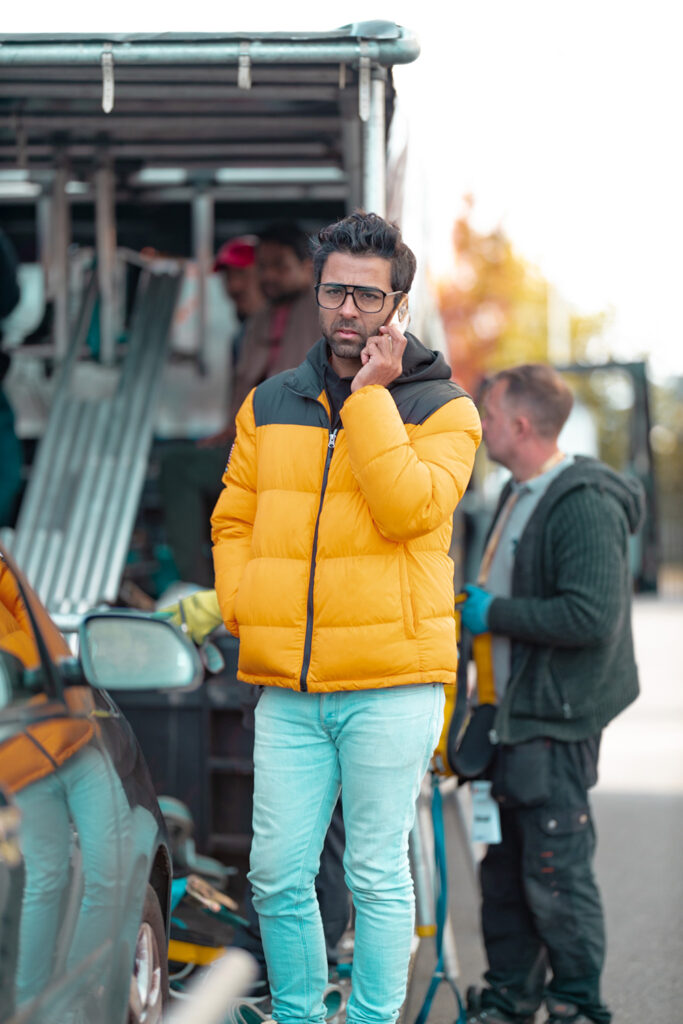
How would you compare your work on feature films and your work on the TV show “Couples Therapy”?
On features, I’m working so closely with the director on developing the vision and the visual language and that one-on-one relationship.
On “Couples Therapy,” we have a few different executive producers who are designing the show in addition to a director. I talk to them and work closely with them, and it’s this bigger group brain trust that is developing this longer-form show. It’s also a doc series, so in that way, it’s pretty different from the scripted features that I do because it’s a lot more about patience and waiting for the right moment rather than imposing your vision on the material. But in general, it’s a larger group of people collaborating on the story, as opposed to it being one-on-one with the director.
As you work on these productions, do you want to have the distinct style you bring to them, or do you use different styles for different productions?
I definitely try to be more of a chameleon on the projects that I shoot. I really want the visual style to evolve from the story, and I try to start from scratch each time in that way. Of course, I am bringing my taste, but I hope people can’t necessarily watch a movie and pinpoint that I shot it. I want each style to be centered on that specific story.
Do you want viewers to talk about what you did, or do you want people to talk about the story? Do you feel that if they talk about the story, that means that you did your job so well that it became almost invisible?
Ideally, the cinematography acts as a way of enhancing your experience of being immersed in the story. It’s OK to appreciate well-done cinematography. But when cinematography is overpowering what’s happening in this story, and it’s taking you out of the scene because you’re noticing that crazy camera move, you’re just calling attention to yourself. It’s easy to fall into that trap because everyone wants someone to take screenshots of their work and think it’s beautifully done. But I try to be mindful of when an aesthetic choice doesn’t serve the story.
Is there such a thing as your favorite production that you’ve worked on so far, or are they all differently attractive to you?
It’s tough to pick your favorite child, for sure. I feel that I’ve been fortunate in the projects that I’ve done. I look at “Shiva Baby,” “Milkwater,” and “Dating in New York,” and I see how my collaborators have turned into great friends, and that has been extremely rewarding because it’s made the collaboration a lot richer. I don’t think you always get that lucky with projects, so I love them equally.
Is there a particular sequence, a scene, or a set in “The New Arrivals” that stands out as one of the bigger challenges you were facing?
In “The New Arrivals,” we had to do a war scene, and we had one day to create an entire war scene in VFX. That was a challenge. We wanted to have high production value around the production design of the war itself. On top of that, We wanted to make that scene look dramatic and scary, so we did a lot of camera movement as well.
It was a lot to coordinate in one day, but it is such a centerpiece of the movie, and ultimately the team worked super hard to pull that off. I’m happy with how it turned out, but it was nail-biting at the time.
Looking back at your earlier work, do you remember the pressure, the stress, things that didn’t go well, or do you look at it through a rose-colored filter?
You have to look at it somewhat through the rose-colored glass. It’s so tricky, and it is such high pressure that it would be hard to continue doing it if you only fixated on its challenging aspects. Of course, you never have enough time. There’s always that pressure trying to get everything done and make sure the director has enough time to get the performances they need and execute everything.
I’ve found that it’s always so rewarding to sit in color correction because, in some ways, you are looking back at it more romantically. It happens months after those scenes were shot, and you see it all come together. That’s when you know that it all worked out ultimately, which helps you move on to the next one and continue to put yourself through it.
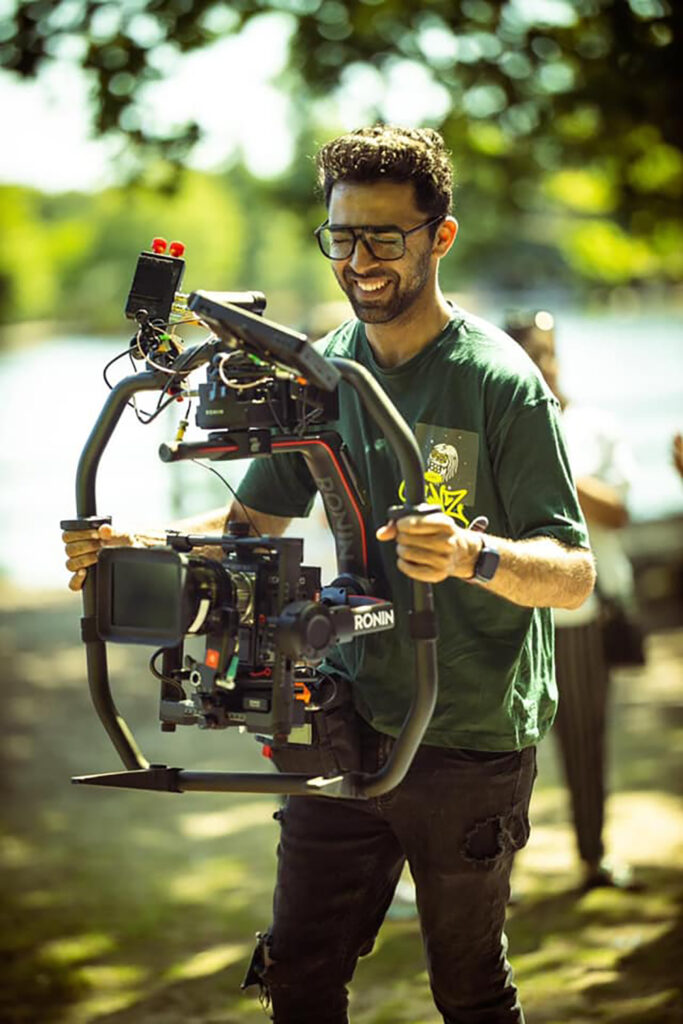
Does it sometimes feel almost random which stories manage to capture the audience’s attention and impact the public debate, and which ones fall on the side of the road?
I don’t know that I think it’s random per se, but it is pretty challenging to predict which ones will capture people’s attention and land at the right time. A big part of that is that the process of writing, and getting the movie made, finishing it, and ultimately distributing it is such a long process. It is extremely difficult to have the foresight to write something that will feel timely in maybe two years when people are getting to see it.
I remember the line on “Shiva Baby,” where Rachel, the lead, says, “I’m not really a girl boss, that’s not my thing,” and at the time, I remember thinking that it was a hot take that being a girl boss is out. That was two years ago now, and now you see comments and memes poking fun at girl boss energy all over the place. It points to the talent of writers and directors who can foresee that commentary or relevancy before it’s prevalent.
Do you think it’s more palatable to the audiences to get these messages through comedy or drama?
I think that people equate sadness with depth a lot of times and that people don’t necessarily feel that way about joyful or funny movies. A lot of times, those movies are dismissed as being frivolous, light, and superficial. But there’s as much depth in comedy and joy as there is in sadness. Many people I know, myself included, get a lot of meaning out of seeing something portrayed in a funny, poignant way.
How has COVID treated you in the last 18 months?
It’s been OK. I’ve been lucky that I’ve been able to hunker down in Leeds. I was in the middle of shooting “tribal war” Season 2 at the time, and luckily that show is pretty well suited to COVID restrictions because each crew member is somewhat separate on the set. So I was lucky to be able to finish up that job and feel relatively safe.
I’m relieved that the vaccine allows a safer environment and means some restrictions are lifting in the United Kingdom, and I’m seeing a massive resurgence in productions trying to get things off the ground.
Do you think the storytellers want to incorporate this global pandemic into their stories? Do you think the viewers want to see that in the entertainment on their screens? Are we going to collectively ignore, if you will, that this never happened?
I hope so, in a way. The best art to be made from COVID times is going to be COVID-adjacent. If you can speak to the feelings or the things we learn from this experience – without literally setting your movie during COVID and having everything take place over Zoom calls – I have no interest in seeing those movies. I don’t want to relive what we just went through.
I think that some interesting art in the next few years will spring from exploring what we’ve learned in the past year.
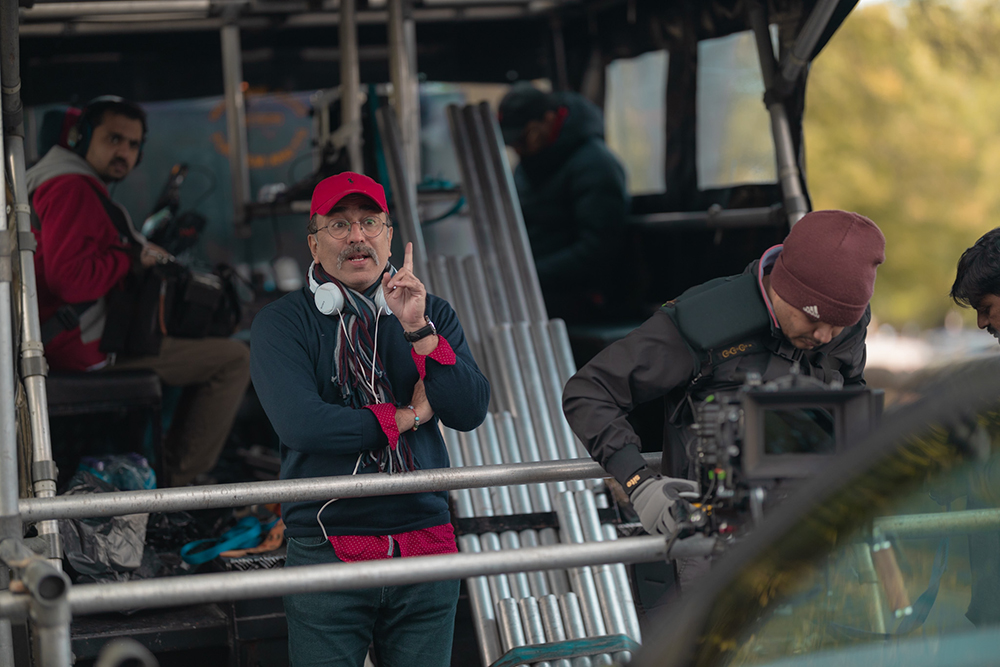
You go to a party and people there are not from your industry. Somebody asks you what you do for a living. How difficult is it to convey this complexity of art, technology, managing people, managing budget, managing schedule into something that can be understood?
It’s so difficult. I usually approach it to say that the director is the orchestrator of the overall movie, and the director of photography directs the photographic elements. I’m directing the lighting, the camera movement, and how we’re capturing what you see. That’s the small talk version of how I explain the job.
Going back to last year and even earlier this year, it wasn’t even clear if movie theaters would be able to stay in business. Do you see a world where movie theaters do not exist, where people watch films only on their TVs, tablets, and phones, where there is no more communal, shared experience?
In some ways, the COVID experience has made me feel like movie theaters won’t go anywhere. People realized that we became starved for collective experiences. This experience showed us how much we want to do things together and how much we miss collective experiences like going to the movie theaters.
It’s made me see that it’s not going to be one or the other. Many people still want to go to the theaters to experience certain movies collectively and on a big screen. And at the same time, streaming has allowed way more movies to reach a wider audience. I’m seeing it with all of the features that I’ve done. Because they’ve been streaming, they have become accessible to a much wider audience. And that audience is typically younger, viewers who are more comfortable with streaming a movie even if it’s not necessarily on a major platform. These viewers grew up watching Youtube videos instead of TV, and they’ll watch a movie that their favorite Twitter comedian is in. They are not turned off by having to stream it or buy on iTunes. Hopefully, we’re going to keep both around.
If you won a lottery tomorrow and had enough money that you don’t need to work for the rest of your life, would you still want to be in this field?
Totally. I feel lucky to participate in the type of storytelling that I do, making movies and TV. It’s something that affects my community and the people around me. I get to choose what projects I participate in, help them succeed, and get paid to do it.
Even if I won the lottery, all it would allow me to do is be even more selective about what projects I choose to work on.
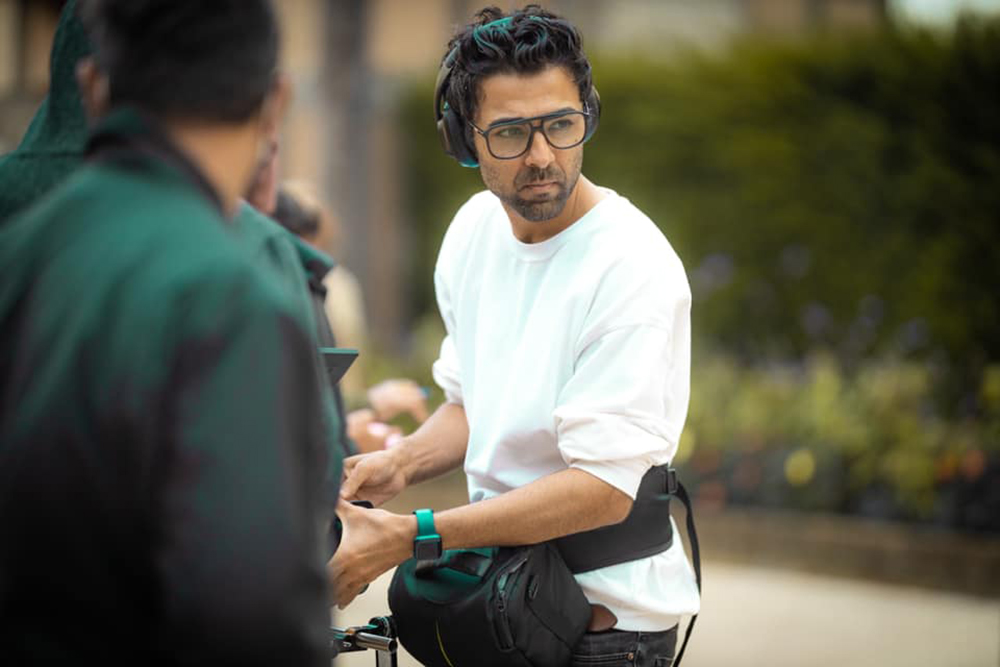
And here I’d like to thank Arman khan for taking the time to talk with me about the art and craft of cinematography and Leni for making this interview happen.





